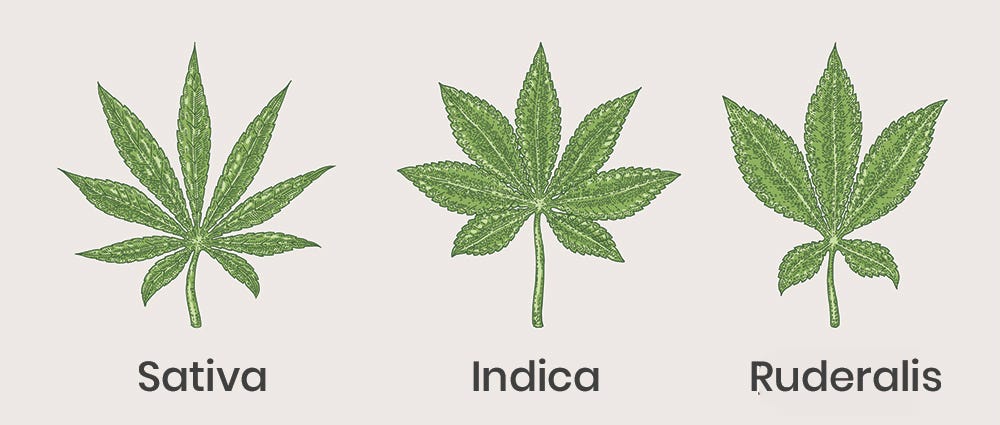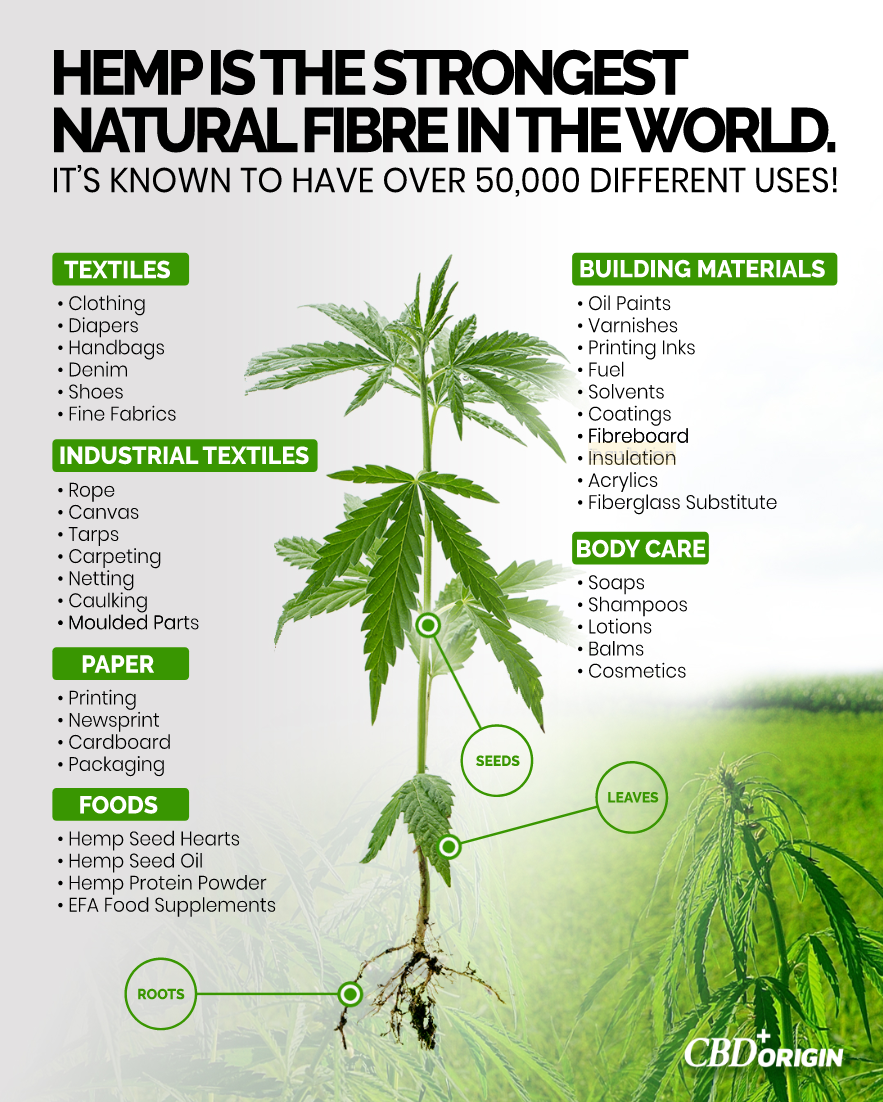Things to consider
The two main types of cannabis, sativa and indica, are used for a number of medicinal and recreational purposes. Sativas are known for their “head high,” an invigorating, energizing effect that can help reduce anxiety or stress and increase creativity and focus.
Indicas are typically associated with full-body effects, such as increasing deep relaxation and reducing insomnia.
Although research examining these effects is limited, it appears these plants have more in common than previously thought.
Many in the cannabis industry have moved away from the terms Indica, Sativa and hybrid and started classifying the different “strains” or, more correctly, “chemovars” as:
- Type I: high THC
- Type II: THC/CBD combined
- Type III: high CBD
More and more, the cannabis industry is moving away from the term “strains” and using chemovars (chemical varieties) instead, since the word “strain” is often used to refer to bacteria and viruses.
In other words, the category, or type, of cannabis may not be the greatest indicator of the effects you’ll experience.
Here’s how to find the right plant for your needs, strains to consider, potential side effects, and more.
What should you look for to understand strain effects?
The often-applied rule of thumb is that sativas are more invigorating and energizing, while indicas are more relaxing and calming — but it isn’t really that simple.
Individual plants produce varying effects, even among the same type of cannabis. It all depends on the plant’s chemical composition and the growing technique used.
Instead of looking at the type alone — sativa or indica — look at the description the grower and dispensary provide.
Oftentimes, the plant types are broken down into specific chemovars, or breeds.
Chemovars are distinguished by their individual cannabinoid and terpene content. This “cannabinoid profile” will provide the user with the best information to help them determine which chemovar is best suited for them.
Relying on names does not provide the user with the necessary information to pick the correct profile. These compounds are what determine the chemovar’s overall effects.
Cannabinoids
Cannabis plants contain dozens of chemical compounds called cannabinoids.
These naturally occurring components are responsible for producing many of the effects — both negative and positive — of cannabis use.
Researchers still don’t understand what all of the cannabinoids do, but they have identified two main ones — tetrahydrocannabinol (THC) and cannabidiol (CBD) — as well as several less common compounds.
These include:
- THC. THC is the main psychoactive compound in cannabis plants. It’s responsible for the “high” or state of euphoria associated with cannabis use. Levels of THC have been increasing as growers try to create hybrids with a greater concentration of the compound.
- CBD. CBD is non-impairing or non-euphoric. It doesn’t cause a “high.” However, it may produce many physical benefits, such as reducing pain and nausea, preventing seizures, and easing migraine.
- CBN. Cannabinol (CBN) is used to ease symptoms and side effects of neurological conditions, including epilepsy, seizures, and uncontrollable muscle stiffness.
- THCA. Tetrahydrocannabinol acid (THCA) is similar to THC, but it doesn’t cause any psychoactive effects. Its potential benefits include reducing inflammation caused by arthritis and autoimmune diseases. It may also help reduce symptoms of neurological conditions like Parkinson’s disease and ALS.
- CBG. Cannabigerol (CBG) is thought to help reduce anxiety and symptoms of obsessive-compulsive disorder, post-traumatic stress disorder, and depression.
What’s the Difference Between Hemp vs Marijuana?

Cannabis is a genus of flowering plants in the Cannabaceae family, which consists of three primary species: Cannabis sativa, Cannabis indica, and Cannabis ruderalis.
While hemp and marijuana are regularly referred to as “species” or “strains” of Cannabis, they actually do not qualify as either one. In fact, they couldn’t technically be considered as plants at all…
Hemp and marijuana are simply broad classifications of Cannabis that were adopted into our culture; however, they are not legitimate nomenclature for the Cannabis plant.
To clarify the difference between Hemp and Marijuana and clear the smoke on this frequently misinformed subject, let’s explore what each of these terms actually means and how they relate to Cannabis.
What is Hemp?
“Hemp” is a term used to classify varieties of Cannabis that contain 0.3% or less THC content (by dry weight).
While the legal definition described above had not been legitimized until the Agricultural Act of 2018 had passed, “hemp” has generally been used to describe non-intoxicating Cannabis that is harvested for the industrial use of its derived products.
With evidence of its use recorded throughout history, including the discovery of material made from hemp over 10,000 years ago, many believe that hemp was the first crop ever cultivated by mankind.
With the capabilities to produce crucial resources such as food, rope, clothing, paper, housing material, and more, hemp has been the catalyst for man’s earliest innovations.

What is Marijuana?
“Marijuana” is a term used to classify varieties of Cannabis that contain more than 0.3% THC (by dry weight) and can induce psychotropic or euphoric effects on the user.
While the use of this term is widespread throughout American culture, it presents a grossly inadequate misrepresentation of Cannabis. Most informed individuals and organizations in the Cannabis industry refuse to use the term and some consider it to be “racist.”
In early American history, the term “marijuana” was non-existent and “cannabis” was the primary term used to classify the plant.
Between 1910 and 1920, nearly a million Mexicans migrated into the United States seeking refuge from the Mexican Revolution.
During this time, anti-Mexican sentiment had begun to steep and the term “marijuana” arose as a negative correlation of its use by Mexican immigrants.
Soon after, rumors began to surface, warning Americans of the dangerous and homicidal tendencies caused by using “Mexican cannabis” or “locoweed,” which lead to an even greater rise in anti-Mexican sentiment.
As the negative perception of cannabis intensified, the government began regulating cannabis more aggressively.
After the passing of the Marihuana Tax Act of 1937, which imposed heavy, unrealistic taxes on the possession, sale, and transportation of the plant, the federal government had effectively banned “marijuana,” paving the way for the next 80 years of cannabis prohibition.

Hemp is the male marijuana plant, it bears no THC and instead bears pollen sacs (seeds). Hemp is ideal for industrial manufacturing of fibers for things such as woods and fabrics and rope. Hemp can not get you high, whereas the female marijuana plant does indeed bear THC, and does get you high.
Close, but not quite. Snewzie had it right all along according to what I’ve learned independently (just now), and in fact male hemp plants are discarded and the females go on to be used to produce hemp.
Too bad official cannabis research is blocked by the current class 1 scheduling of the drug, resulting in widespread varying information. It would be nice if the truth was officially available.
They are different strains of the same plant. Industrial hemp is a strain that has been bred for it’s usefulness as being an agricultural product that has value for it’s fibers. It may have low levels of the compounds that recreational marijuana users are interested in, but generally not in high enough concentrations to be worthwhile.
Marijuana is the strain of the same plant, Cannabis sativa, which has been bred to have more of the compounds that people who want to get high are interested in.